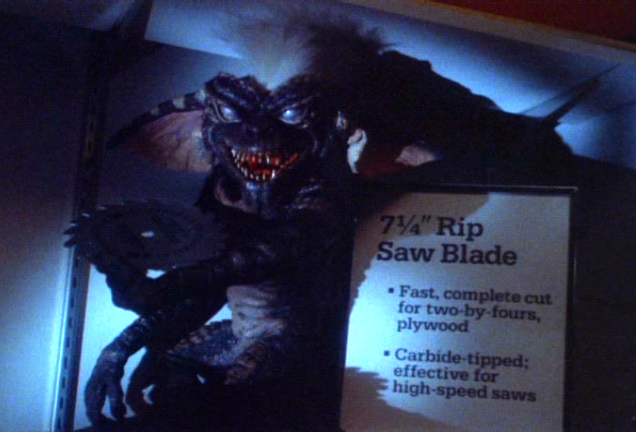Summary
Go to the Wikipedia page for full summary of each of Volume 1’s sections. My notes will highlight the areas I found most interesting.
Notes & Quotes
- Marx’s concept of the “fetishism of the commodity” can easily be read through the gothic or horror lens. According to Marx, capitalism obscures the social labor that helps to create the quality or value of a commodity in favor of reducing the value of the commodity to money. Marx therefore views the commodity as having a “mystical character” that arises from the magical significance that capitalism has attached to money (164). We forget that money and commodities are products of society and instead view them as having value in their own right. This mystic power allows capitalists to conveniently ignore the social aspect of wealth and labor, particularly the (violent) exploitation of the working class who create these commodities. Gremlins (1984) contains a similar view of the fetishized commodity, though it refuses to allow the small American town of Kingston Falls, which looks like something out of a Norman Rockwell painting. After purchasing Gizmo ( a priceless commodity that was “not for sale”) from a small shop in Chinatown by creating his own monetary value for the item, Mr. Peltzer gives it to his son as an early Christmas present. This violence and social value repressed within the commodity is unleashed upon the small town, ending with a show-down in a department store, where gremlins are repeatedly shown hiding amongst the other commodities. I’m also reminded of The Moonstone, an object cursed because of its repressed history of colonialism and exploitation; as well as Sherlock Holmes’s ability to read in any object their social history and traces of human interaction.

- Laborers sell their labor-power (a commodity) to the capitalist in exchange for other commodities (including shelter, food, clothing, etc.). The capitalist takes the products made by the workers and sells it on the market in order to accumulate more capital. Because a commodity’s value is made up of the labor time “congealed” in it, the surplus value needed to accumulate capital must come from the workers. Therefore, the capitalist makes the laborer work longer hours in order to generate surplus hours. For Marx, this is an exploitation of the laborer who must work beyond the time needed to generate value to sustain themselves in order to create value that goes directly to the capitalist himself. I’m interested in the ways that the laborer is viewed to have sold their own “labor-power” to the capitalist. In order to turn this commodity over to the capitalist, the laborer “manages both to alienate… his labour-power and to avoid renouncing his rights of ownership over it”(271). This is a sort of selling of one’s self as well as one’s time/life. This is very reminiscent of David McNally’s view that gothic literature was popular during the industrial revolution and the rise of capitalism because of this reality of dismemberment. Laborers must dismember and sell a part of themselves (their labor-power, their time) to the capitalist. Similarly, gothic literature features characters whose bodies are literally dismembered or sold, or whose blood is drained by vampires (a monster who Marx mentions as well).
- In Realizing Capital, Anna Kornbluh reads Capital as a Victorian novel. In particular, I’m interested in her description of Marx’s personification of capital. Not only does he use personification as a literary method, but, according to Kornbluh, Marx’s use of personification also help to better analyze the nature of capital:
…he demonstrates that part of capital’s roving, ungrounded power is its subsumption of the very idea of subjectivity: not only do persons become things, but monstrous systems become persons, assuming the agency of world-making. Dickens, Eliot, and Trollope have illustrated the moral shortcomings of subjects who economize themselves, forging poor relationships, downsizing valuable connections, dissolving ethical obligations. With his exploration of personification Marx helps us to see that these impoverished relations commissioned by the very idea of psychic economy are merely symptoms of that distorted order of production that estranges all intimates. The psychic economy metaphor, in the nineteenth century and in our own, is arguably nothing other than the personification of capital. (129)
